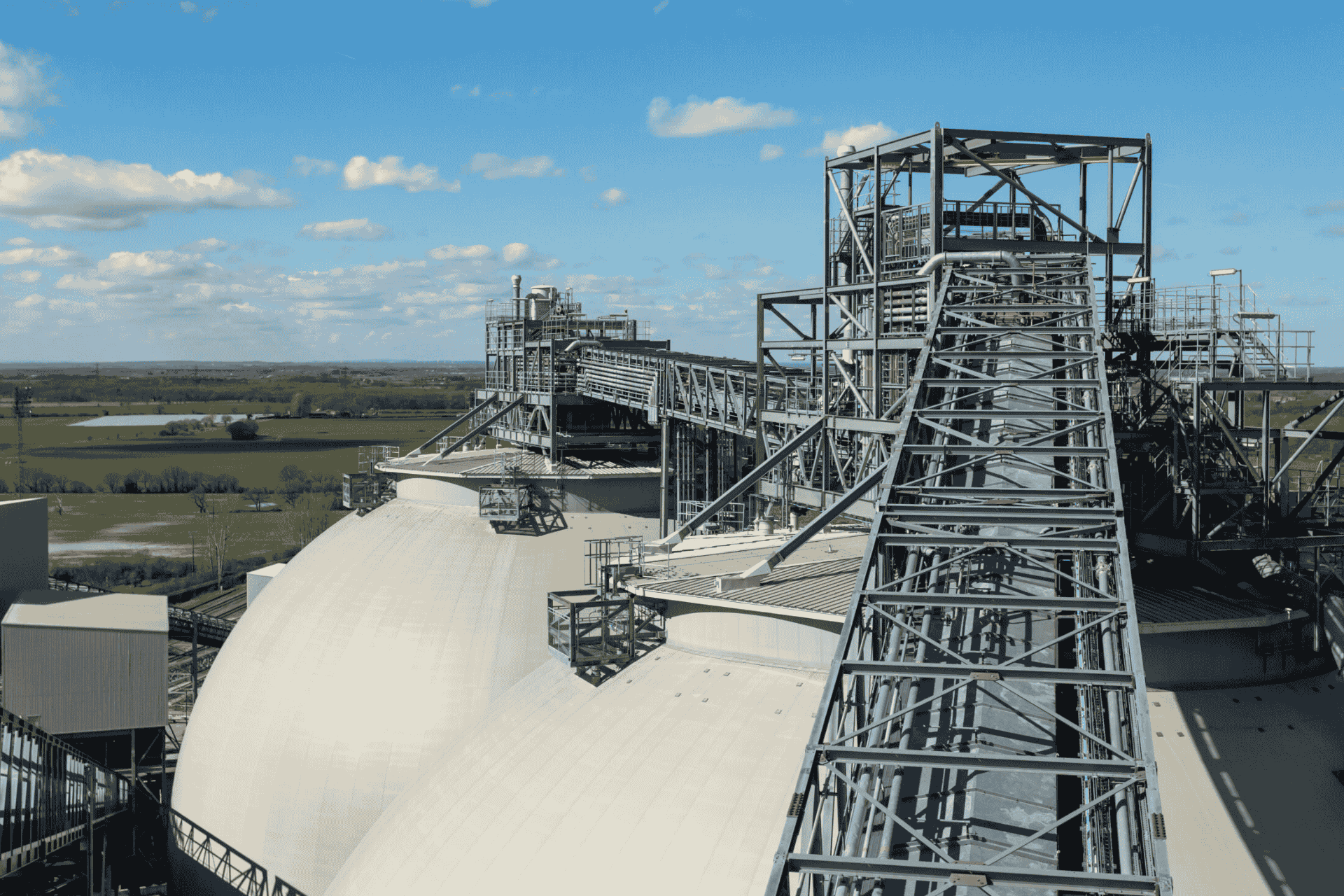Is biomass sustainable?
In ecological terms, biomass refers to any type of organic matter. For as long as humans have made fire, we’ve created biomass energy (bioenergy). Nowadays, it’s possible to use biomass in the form of pellets or logs within domestic settings, and in liquid form as biogas and biofuel. At grid scale, power stations use biomass to replace fossil fuels for generating electricity.
Follow this link for an introduction to biomass.
This article focuses on the sustainability of biomass – not least because it’s the primary feedstock at Drax Power Station.

A sustainable balance between absorbed and released CO2
Biomass comes from organic, living matter. It’s in a constant cycle of growth and renewal, absorbing carbon dioxide (CO2) from the atmosphere in the process.
The production of biomass for bioenergy is a very small part (just 4% in the US) of a broader forest products industry that concentrates on managing forests to produce high quality wood. Such wood attracts a premium price, and is the mainstay of sectors such as construction and furniture-making. Using wood instead of materials like steel or concrete lowers the carbon footprints of these sectors. Moreover, the use of wood in long-life products like houses keeps the carbon in the wood locked away from the atmosphere. Material generated during management and harvest that can’t be used for high quality wood products can be turned into pellets for bioenergy.
When generators combust these pellets to produce energy, the CO2 that the process releases was only recently removed from the atmosphere. When power plants burn fossil fuels such as coal to generate electricity, these fuels release into the atmosphere CO2 that had previously been locked away underground for millions of years.
What makes bioenergy renewable?
The feedstock for biomass energy (bioenergy) includes plant material, wood, and forest residue – organic matter that absorbs CO2 as part of the biogenic carbon cycle. When the biomass is combusted (to generate heat or electricity), the biogenic carbon stored in the organic matter is released back into the atmosphere as CO2.
Adding carbon capture and storage to bioenergy – creating BECCS – means the biogenic carbon absorbed by the organic matter is captured and sequestered, permanently removing it from the atmosphere. By capturing CO2 and transporting it to geological formations – such as porous rocks – for permanent storage, BECCS moves CO2 from the biogenic to the geological carbon cycle. Because BECCS removes more carbon than it emits, it delivers negative emissions.
For bioenergy to be considered renewable, the biomass used must be sourced sustainably. In this case, that means that the forests we source from are regrowing at the same rate (or faster than) they are harvested for wood products. The cycle remains in balance because those managing the working forests actively replant areas that are harvested and look for new areas to plant. As these replacement and new trees grow, they absorb carbon and the cycle continues.
Can shipping pellets around the world be sustainable?
North America is a key supply region for countries and organizations that use sustainable biomass. That’s because of its well managed commercial forestry industry, commitment to sustainability and good infrastructure.
The working forests in the US South alone are about three times the size of the UK; forest stocks for the USA have almost doubled since the 1950s. Simply put, the UK doesn't have sufficient forest capacity to meet demand whereas the US does.
At Drax, we already have a low-carbon supply chain for our biomass and we're working with our partners to further decarbonise it. We report our independently audited supply chain emissions in our Annual Report.
How does Drax source its biomass?
We began co-firing biomass with coal at Drax Power Station in 2003 and completed our first full conversion of a coal unit to biomass in 2013.
Drax undertakes sustainability due diligence on its suppliers and uses external certification schemes, internal assurance system and third-party audits commissioned by Drax to test the sustainability of our biomass suppliers.
Our Biomass Sourcing Policy and Supplier Code of Conduct outline our requirements, and we include them in our biomass supplier contracts. For more information about the biomass criteria that Drax applies, please see the company’s web page about sustainability.
What’s the Drax commitment to forest biomass sustainability?
In April 20024, Drax published its final response to the ‘BECCS Done Well’ report – the output of an independent inquiry into BECCS (bioenergy with carbon capture and storage). Environmental campaigner Jonathon Porritt chaired the inquiry and convened a High-Level Panel of experts to establish the criteria for implementing BECCS in the best possible ways. The report presented these criteria as 30 conditions, many of which concerned forest biomass sustainability.
Drax considered and responded to each condition, with commitments to action outlining how it would implement BECCS in ways that deliver positive outcomes for climate, nature and people.
Read the final response from Drax.


